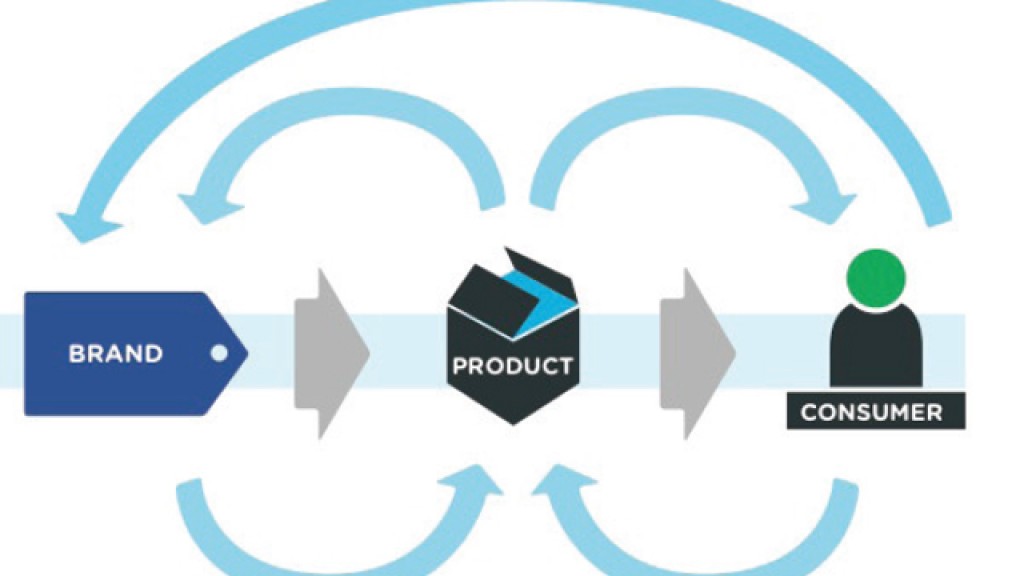Resources - Blog
Designing for a circular economy

Gone are the days of sustainable design. Now we have to learn to think about lifecycles, and designers have a key role to play.
We live in what’s currently termed a linear economy. We dig resources up out of the ground, use vast amounts of water, fuel and chemicals to magically turn them into glitzy products, and then when we’re finished with the products, we dig a big hole in the ground and bury them. We’re so used to this crazy one-way street that we don’t even think about it, we just keep on making and consuming more and more. However, now we’ve hit a problem: the metals and fossil fuels that we’ve been digging out of the ground to make all this stuff are running out. People are fighting over the last of the earth’s supplies while China owns more than 80% of what’s left and is rapidly amassing more. So it seems that the way we’ve been living for decades might not serve us very well any more and that we now need to move quickly to rethink our entrenched habits.
As a result of these shortages, the price of resources is rocketing: for example, copper prices have tripled in the last 3 years. As a result many businesses who make related products are losing profits at an alarming rate. We in the UK could save at least £220bn a year if we were to design products in a way that supported resource recovery and eliminated waste streams. With 290 million tonnes of valuable resources becoming waste and going into landfill every day, the economic case for recovering and reusing raw materials is stronger than ever before. What we’re talking about now is moving from the aforementioned linear economy, to a circular economy. In a circular economy, there is no such thing as waste – all “waste” becomes the raw materials for something else.
We designers have got used to working within the linear structure. We are never asked to think about lifecycles: we just work out how to create something that is attractive to purchase. We mostly work on the product, the packaging for the product, the marketing, advertising, point of sale or website for a product. We don’t think for a minute about what clever things we could do to stop what we make going into landfill, because it’s not been on our agenda; no one’s asked us to apply our skills to this problem. However, this is all set to change imminently; pretty soon our briefs are going to start containing these difficult and unavoidable questions. We will have to up our game; we will need to understand what a circular economy is and to realize that as designers we will play a crucial role in creating this transition.
Designing for a circular economy is complex. Gone are the days of ‘sustainable’ or ‘eco’ design, when a simple change of material to a recycled alternative would give a project environmental credibility. Now, in order to understand all the facets of the problem, we need to talk to each of the stakeholders involved in the lifecycle of a particular product, for example chemists, material scientists, and people who run recycling plants. If you’re reading this and thinking “well, I don’t make products so this has got nothing to do with me’, then think again: brands & designers are going to have to work hand in hand with consumers to change consumption models away from the ‘take, make, waste’ linear business model to one of ‘lease the resource, make the product, recover the resource and then remake the product’. This new paradigm will require take-back schemes at the end of the product’s life, repair programs or products designed specifically for easy upgrade, and each of these new models will need to be embraced, understood and communicated by tomorrow’s designers
The transition from purchasing to leasing is helping us move to more intelligent systems. Instead of buying a car, I can use Zipcar; a service that lets me use a car whenever I need one. Instead of buying a DVD, I can rent the film from LoveFilm or iTunes. The successful creation of these services is one of the newest and most multidisciplinary design problems and it needs truly excellent graphic designers & web designers working as part of a team to ensure that consumers fully understand that leasing or renting will be as good (if not better) as purchasing.
We need to all start getting curious about product lifecycles. Where did the Tantalum come from in my phone, and why were people fighting over it? When I put a biodegradable plastic bottle in the recycling bin, where does it actually go? Start doing this and you’ll never look at an object in the same way again. Look out for products that you can lease, upgrade or take back, and start talking to your clients about product lifecycles before they start rewriting your briefs. You’ll not only be helping our society change to a life-saving circular economy, you’ll be future-proofing your career as well.
Nat Hunter is Co-Director of Design at The RSA. She has recently launched The Great Recovery, which has large sums of cash to give away to design-led projects that move us towards a circular economy.
This article was written by Nat Hunter for Computer Arts Magazine.





